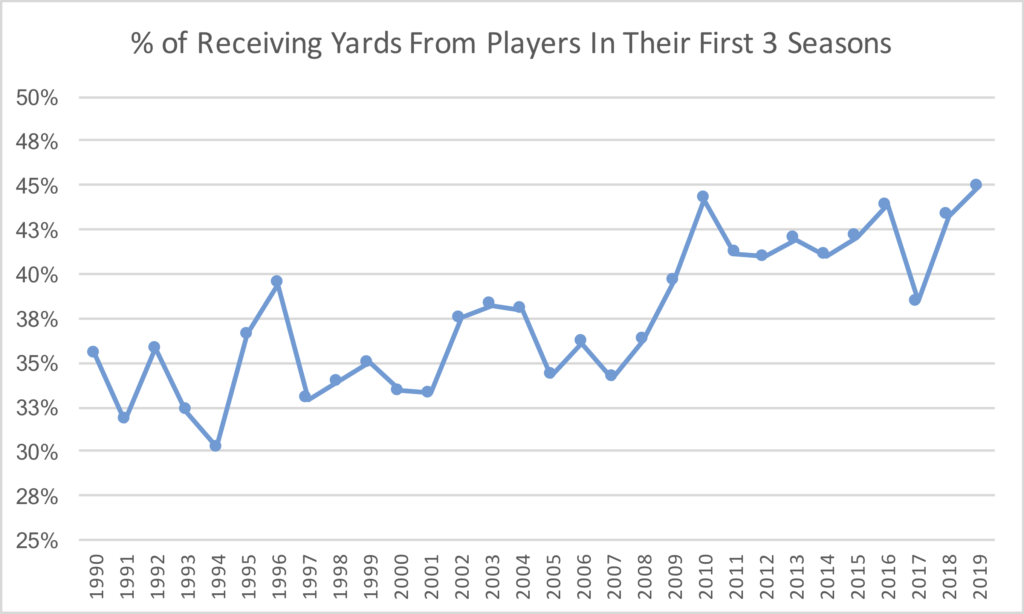Players who are in their first three years in the league are responsible for a whopping 45% of all receiving yards this season. That is a new high in the modern era, and since the new CBA was signed in 2011, we have seen a trend of younger players being responsible for more receiving yards.
There is one notable exception, and that was in 2017. But there’s a perfectly good explanation for that: the 2014 Draft class entered their fourth year in 2017. Brandin Cooks, Mike Evans, Jarvins Landry, Davante Adams, Sammy Watkins, along with an injured in 2017 Odell Beckham Jr., formed arguably the greatest draft class in wide receiver history. In addition, Adam Thielen is considered part of their class for NFL experience purposes: he went undrafted in 2013 but did not make the final roster, so his rookie year was 2014.
But otherwise, we see players in their first 3 seasons have become significantly more impactful in the receiving game (along with most places) since the new CBA. The graph below shows the percentage of receiving yards, by class year, for each year since 1990.

A couple of notes. You can follow a class year by moving down directionally like a bishop: in 2014, you see a dark blue for 1st-year players, and a dark blue for second-year players in 2015 and third-year players in 2016, and so on: that diagonal line is the 2014 class. Otherwise, we see that 2nd and 3rd year players are the ones making the big difference this year. The class of 2017 also looks strong: third-year players Chris Godwin, Cooper Kupp, Kenny Golladay, Austin Ekeler, Mike Williams, George Kittle, JuJu Smith-Schuster, Christian McCaffrey, Evan Engram, and Curtis Samuel all are averaging at least 45 receiving yards per game this year.
But the unmistakable trend is that veterans are losing out to players on rookie contracts. And once the 2014 class slows down — they are at 12.0%, which is extremely high for 6th-year players — the trend may be even more significant.

